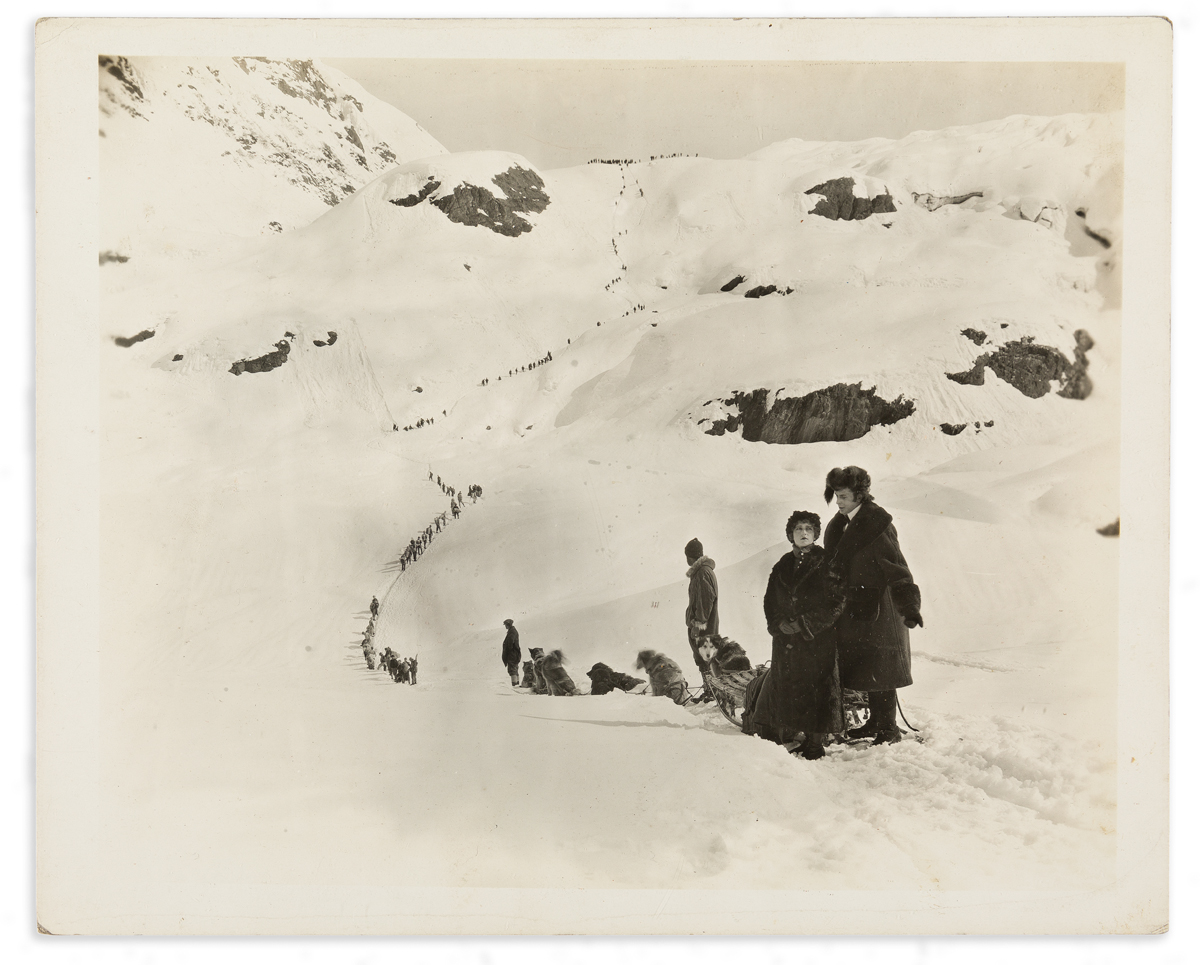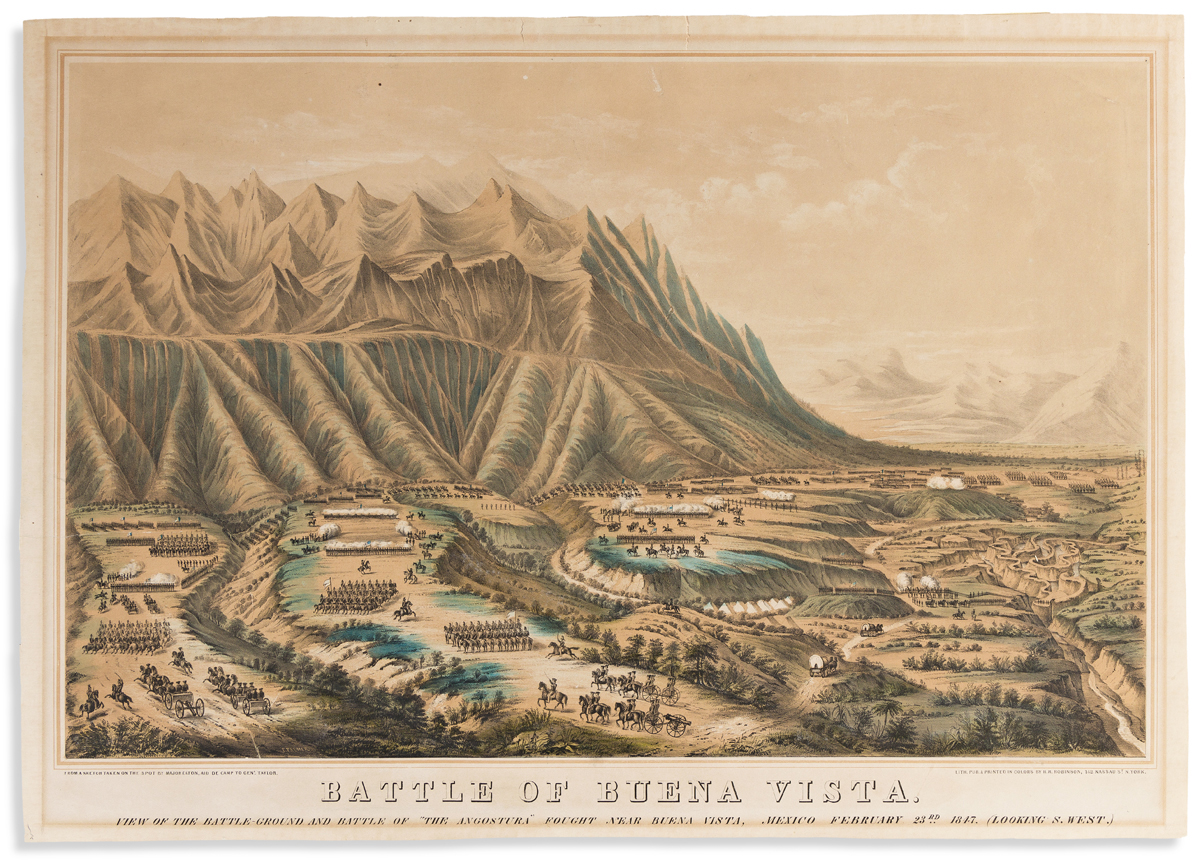Collector’s Guide: Declaration of Independence
Probably the most common question we get in the Americana department is “I found an original copy of the Declaration of Independence—is it worth anything?” The short answer: it’s worth somewhere between zero and ten million dollars. But very likely zero.
The most valuable printing of the Declaration of Independence is the first, a broadside printed on July 4 or 5, 1776. It was a typeset document, not a facsimile, and did not list all of the signers. At the bottom, it reads “Philadelphia: Printed by John Dunlap.” No other copies have been spotted at auction since 2000, when one sold for more than eight million dollars. Other very early broadside and newspaper printings have topped a million. More commonly seen are British magazine printings from 1776, which usually sell in the $1000 range.
When looking to consign or collect a copy of the Declaration there are a few things to keep in mind. Our Book Department Director and Americana Specialist, Rick Stattler, touches on the various printings, the differences between them, and what makes a copy valuable.
The First Printing of the Signatures
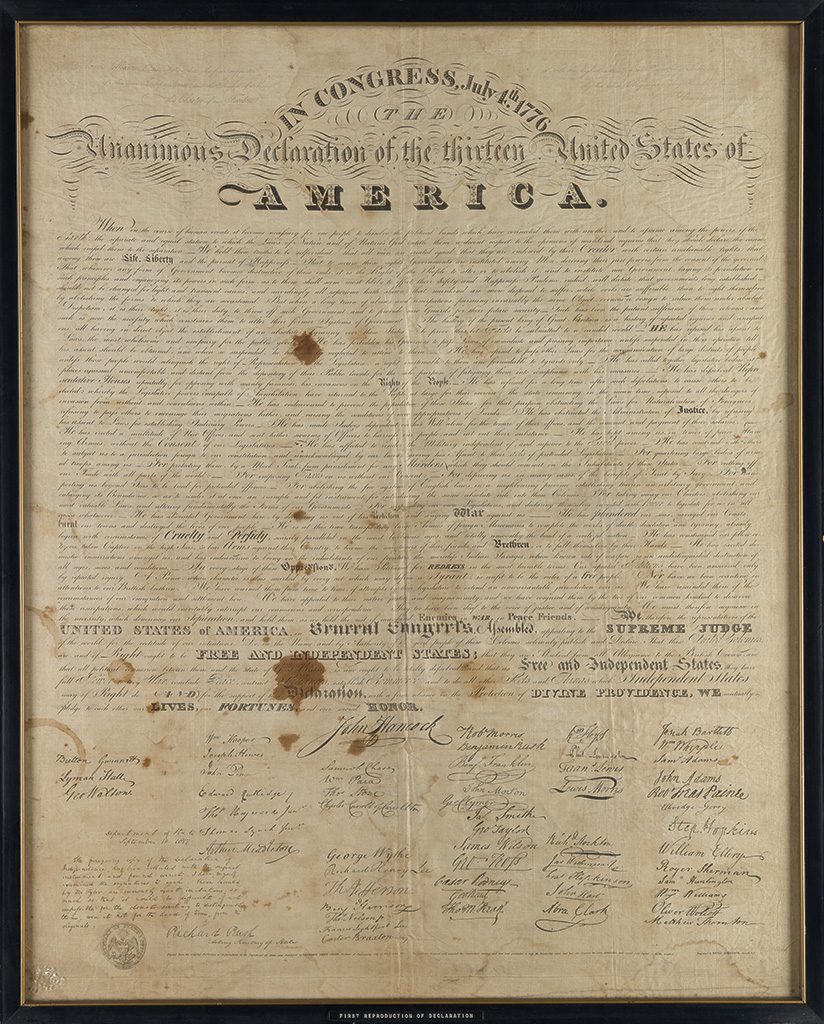
Not until 1818 did an engraver reproduce all of the signatures on the Declaration. A Boston calligrapher named Benjamin Owen Tyler undertook the project. He made no attempt to reproduce the handwriting in the main body of the text. Until Tyler’s effort, the general public had never seen John Hancock’s now-iconic bold signature on the document. The Milton Slater copy, one of a handful printed on silk, brought $25,000 at Swann in 2015.
The Stone Engraving
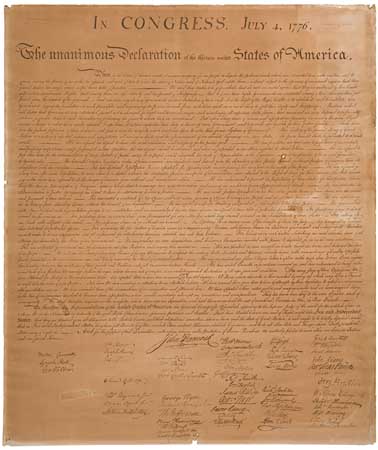
The first complete facsimile printing—text and signatures—was by commissioned by the State Department in 1823. William J. Stone was the engraver. Only 200 copies on vellum were produced, plus a few additional copies on paper. This printing was life-sized, about 30 x 26 inches, and can easily be distinguished by the tiny text in the upper left corner: “Engraved by W.J. Stone for the Dept. of State by order.” Swann sold one of the paper editions in 2008, topping $100,000 at $132,000. Seth Kaller’s 2014 pamphlet America’s National Treasure: The Declaration of Independence & William J. Stone’s Official Facsimile is a good resource for studying this engraving.
The Force Printing
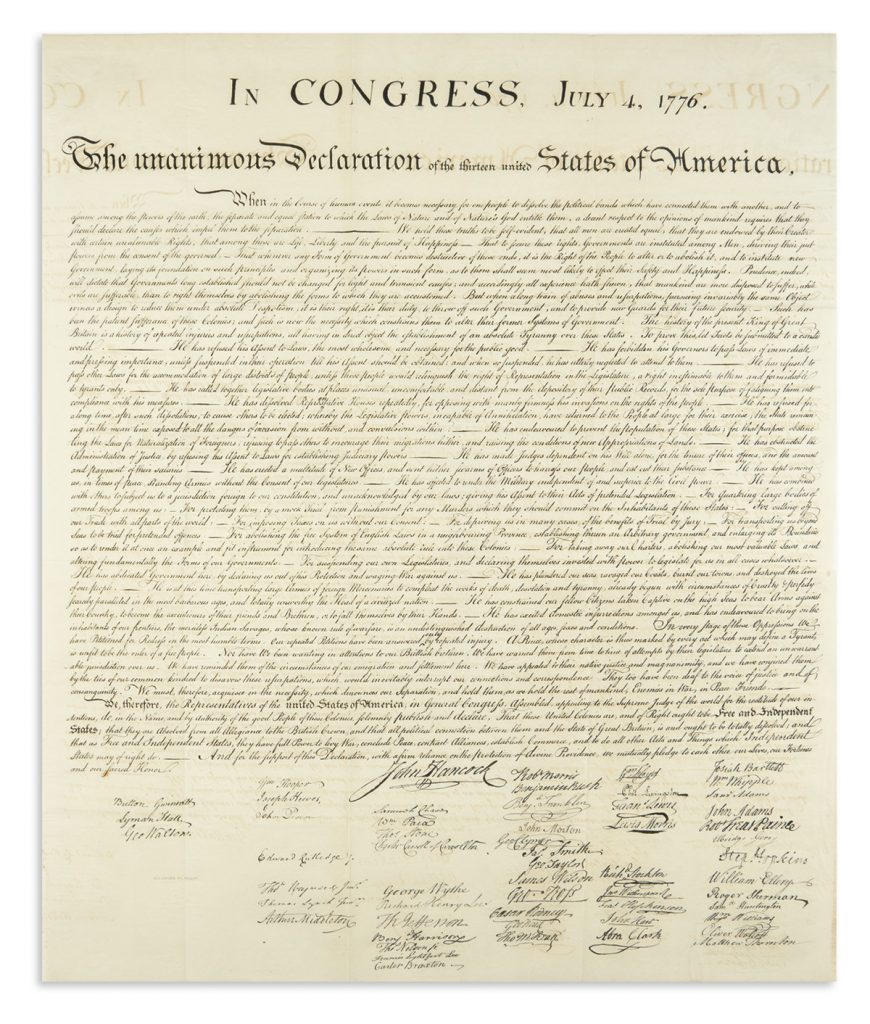
Stone’s original engraving plate was then altered slightly to produce rice-paper copies for Peter Force’s American Archives series, with the original engraver’s imprint rubbed out and a similar imprint added in the lower left beneath the signatures reading “W. J. STONE SC. WASHN.” These Force copies were printed from the altered plate by Stone in 1833, although they were not bound into volumes and released until 1848. These are not all that scarce on the market, but attractive and quite desirable, and nice copies consistently bring around $20,000.
Mid-Nineteenth Century Printings
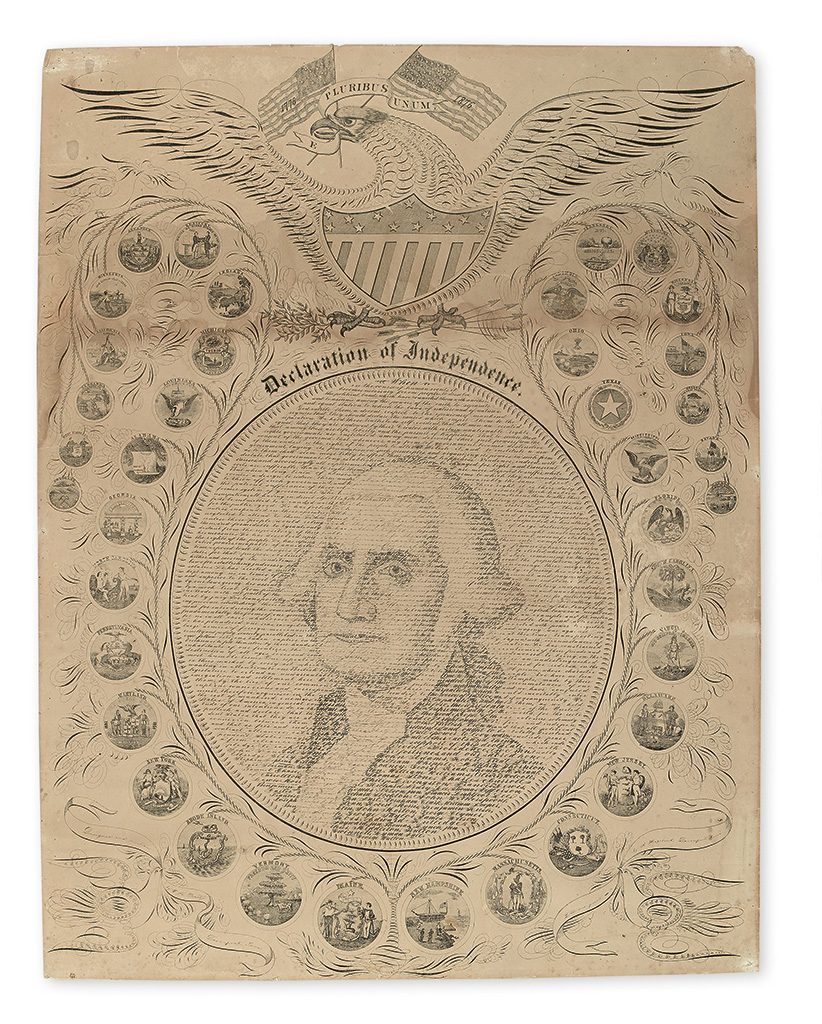
These early printings gave imitators something to copy. Dozens of different broadside printings appeared from the 1820s through the 1876 centennial. We have seen them in this era on silk, stamped on metal, reproduced in miniature on white glossy card stock, even with the words arranged calligraphically to form a portrait of George Washington.
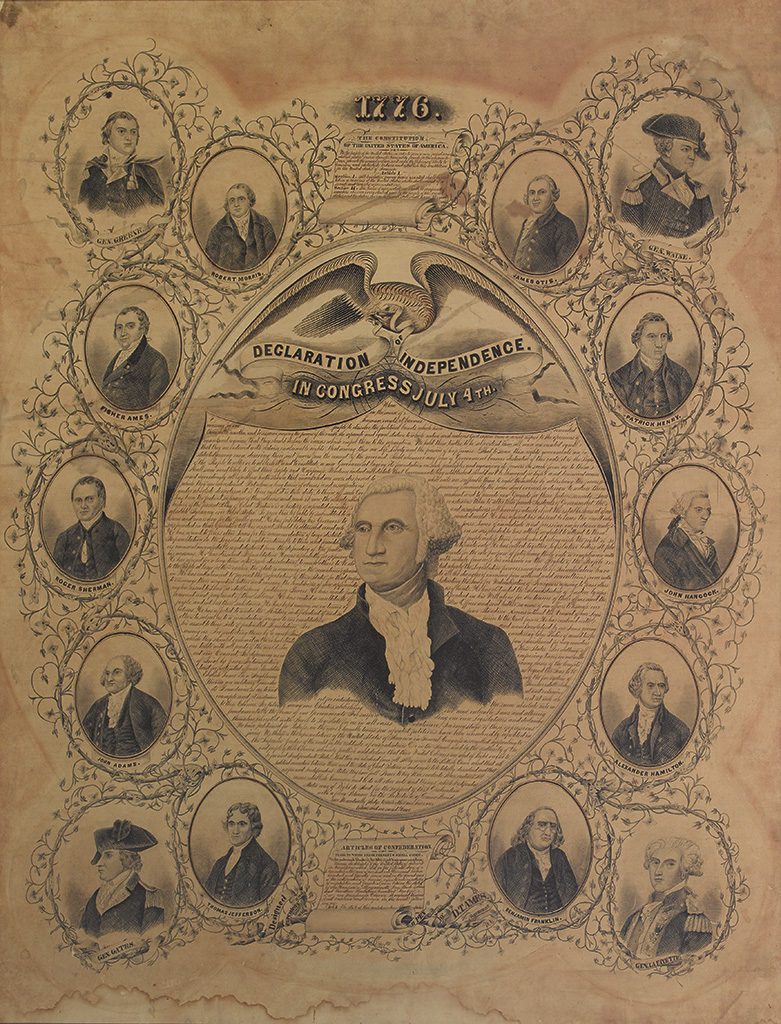
These mid-nineteenth century printings are a staple of any Americana catalogue, and usually bring between a few hundred and a couple thousand. A 1989 article by John Bidwell called American History in Image and Text is still the best effort to describe and catalog all of these broadside printings. Sometimes we’ll see an artistic manuscript rendering, such as this particularly nice 1866 illustrated example from the Forbes Collection, above.
After 1900, the renderings grew less artistic, and tended to just copy the 1823 Stone facsimile. Probably hundreds of thousands were produced as souvenirs for the 1976 Bicentennial alone. These modern reproductions are very often printed on imitation parchment—dark brown, crinkly and brittle. They usually do not have any statement of responsibility: no notice of a printer, engraver or publication date. (One common exception was a freebie given away in huge numbers by the tobacco conglomerate Philip Morris in 1989, accompanied by facsimiles of the Constitution and the Bill of Rights). And they are almost always much smaller than the 30 x 26-inch Stone printing.
Often we are assured that a newly unearthed copy must be “really old,” because “my grandmother had it” or “it’s in a really old frame” or “it looks hand-written.” If your printing does not say who produced it, and it’s less than 20 inches tall, and it’s on “the crinkly paper,” it probably has very little value. And by very little, I mean you might be lucky to get $10 for it at a flea market. Sorry for the bad news.
If you read this and still think you might have a winner, we would be glad to have a look! Send the measurements and a high-quality image with enough detail for us to read the printer’s credit line. If you have one of the good eighteenth or nineteenth-century printings, we can offer an auction estimate. And if it’s a Philip Morris giveaway from 1989, we’ll try to let you down easy.
